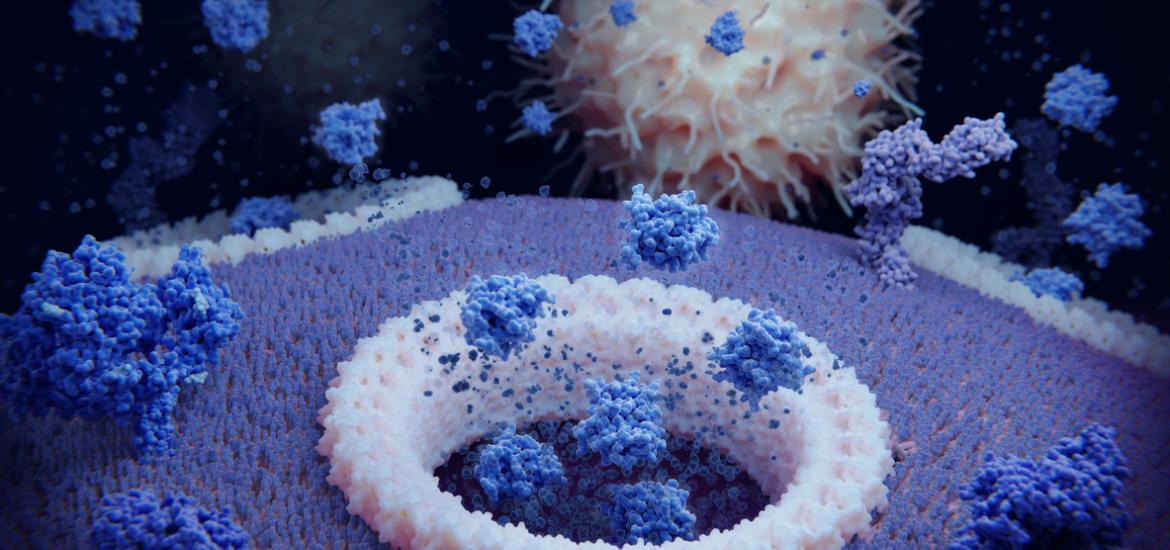
SITC 2023 – Aulos and Xilio press on with cytokine approaches
But the groups have yet to see any responses with AU-007 and XTX202 respectively.
But the groups have yet to see any responses with AU-007 and XTX202 respectively.

Excitement over cytokines is not what it once was, but there continues to be plenty of activity in this space. One of the contenders here is Aulos, which is taking a novel approach to boosting IL-2’s activation of CD8+ T and NK cells. On Friday the group reported phase 1 data at SITC that it believes justify pushing forward with its lead candidate, AU-007.
However, among 33 evaluable patients with various solid tumours treated with AU-007 alone or in combination with Proleukin, there were no objective responses – the best Aulos could say was that nine patients had stable disease. And with the company moving towards the Proleukin combo there are questions about whether it will find a therapeutic window.
Meanwhile, Xilio’s beta-gamma IL-2 XTX202 also didn't spur any responses in an early monotherapy setting, and the company is focusing on a higher dose in phase 2.
Proleukin pros and cons
Proleukin is a recombinant human IL-2 that has anticancer activity, but is also linked with serious adverse events. Many have tried – so far without much success – to improve the risk-benefit profile of IL-2, for example by avoiding binding to the alpha chain of the IL-2 receptor. The alpha chain is part of the high-affinity trimeric receptor expressed on Tregs, so activating this receptor could actually damp down anticancer activity.
AU-007 is a slightly different “not-alpha” approach. The project isn't an IL-2 therapy itself, but is a MAb that binds to IL-2 and prevents this from binding to CD25 – another name for the alpha chain of the receptor.
Essentially, AU-007 is designed to redirect IL-2 towards medium-affinity receptors, which comprise the beta and gamma subunits and are found on CD8+ T and NK cells, therefore bolstering anticancer activity.
Previously it had been unclear whether AU-007’s action on a patient’s own IL-2 would be enough, or whether exogenous IL-2 would be needed. Privately held Aulos now believes that a Proleukin combo is the way forward, and plans to take this into the phase 2 portion of the trial, due to start late this year or early 2024. The exact combo regimen hasn't yet been nailed down, its chief executive, Aron Knickerbocker, told ApexOnco.
Loading vs regular dosing
The phase 1 portion of the study, in heavily pretreated patients, tested two combo approaches: a one-off Proleukin “loading” dose, or regular Proleukin given once every two weeks – both on top of AU-007 every two weeks. It's worth noting that the Proleukin dose in the trial was lower than its approved dose.
Still, more adverse events were seen with AU-007/Proleukin than with AU-007, with 7% of combo patients experiencing grade 3/4 lymphopenias. The SITC poster didn't specify whether these cases came with the loading or regular dosing of Proleukin, or both.
Knickerbocker played this issue down, saying cases were transient and that lymphopenia is a known effect of IL-2 treatment. But, with no responses with AU-007 so far, it raises the question of whether higher Proleukin doses will be needed – and therefore whether Aulos could end up being scuppered by the problem that has hit its IL-2 rivals.
Beta testing
Meanwhile, Xilio is already dosing higher with XTX202, an engineered beta-gamma IL-2 also designed to avoid Treg stimulation.
The phase 1/2 study presented at SITC tested XTX202 doses of 0.27-4.00mg/kg in heavily pretreated patients with various solid tumours. Xilio will now have to hope that a dose-dependent disease control rate will translate into clinical responses at the 4mg/kg dose, which it plans to test in phase 2 in renal cell carcinoma and melanoma.
Data from around 20 patients should be available in the second quarter of 2024. During a conference call today Xilio execs said the bar to hit with monotherapy was a 15% response rate – which is what has been seen with Proleukin.
782













